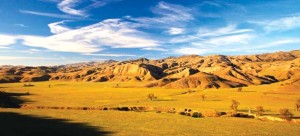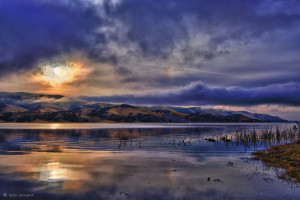This Saturday at 10 am, activists led by Food and Water Watch will meet at the Warming Hut in Crissy Field for one part of an international day of action against “fracking” — the process of hydraulic fracturing that extracts gas and oil using water and other chemicals under extreme pressure to break up rocks deep underground. The practice has become widespread and controversial across Appalachia, the Northeast, and parts of the interior West, but it’s been a bit player in California so far.
That might be changing, according to both the leader of the anti-fracking campaign and a professional geologist we spoke to.
Oil company Venoco is reportedly fracking in the Sacramento Valley, and Occidental Oil Company has been engaged in fracking in Southern California, and a subsidiary called Vintage Productions has been drilling in the Delta as well, says Adam Scow, California campaigns director for Food and Water Watch. “They have been doing deep drilling in the Delta for the past year. They have been drilling 12,000 feet deep according to a resident out there,” says Scow. “We don’t know if fracking is happening right now in the Delta. Only the company would know, and they have no incentive to disclose that.”
Scow’s group is looking to stop facking in California before it really gets rolling: “We’re building toward legislation in 2013 to at a minimum bring a strong moratorium on fracking until it can be proven safe. We’re calling on the governor to issue a moratorium. Right now, the state is studying what regulations it might pursue and will release a draft of those regulations by the end of the year. We don’t expect much from them, given the current relation between the state and oil companies.”
In the East, fracking is almost universally associated with natural gas, often in the Marcellus Shale, a large formation that runs from New York all the way to Ohio and Virginia.
Here in California, while there may be minor fracking activity for natural gas, the greatest potential is for oil in the Monterey Shale (described by an LA Times blog post last year), an extensive geologic formation that spans hundreds of miles from Southern California all the way to the Bay Area and includes the southern San Joaquin and Salinas Valleys.
There’s a significant amount oil in the Monterey Formation and similar source rocks, says geologist John Karachewski, a frequent contributor to Bay Nature magazine and a leader of many local field trips. These days, Karachewski works for the California Environmental Protection Agency and doesn’t have detailed knowledge of current oil industry plans, but early in his career, he worked in the oil fields of North Dakota, where fracking is being used extensively to extract crude oil.
Geologists and oil companies have known about California’s petroleum resources for over a century: Some of the earliest productive fields were in Southern California in the early 1900s, Spanish explorers reported oil from natural seeps floating on the ocean’s surface 100 or more years before that, Native Americans sealed ocean-going canoes for their trips to the Channel Islands with asphalt or tar from natural deposits for centuries or millennia before that, and the LaBrea Tar Pits famously entombed Ice Age creatures 40,000 or more years ago.
But that’s just the tip of the iceberg. Much of the Monterey Shale has not been drilled for oil because it is such a “tight rock.” Horizontal drilling and fracturing could change that picture drastically. “The Monterey Formation and horizontal drilling and fracturing could create a California oil boom,” says Karachewski. “There’s the potential for new development of billions of barrels of oil.
Although oil wells were drilled in the Bay area during the middle of the last century, including the Point Reyes Peninsula before it became a national seashore, the petroleum deposits were small and uneconomic. So the Bay Area is unlikely ever to be attractive for much drilling or fracking.
In Central California, there will likely be plenty of environmental opposition along the coast, but in places like Kern County, pumpjacks have been a fixture of the landscape since the early 1900’s.
Karachewski explains that what petroleum geologists and engineers may narrowly define as fracking — the fracturing of rock to release oil or gas — happens many thousands of feet below the surface; in itself, that’s unlikely to contaminate drinking water aquifers or watersheds if the wells are properly constructed. However, that’s just a one aspect of the total drilling and fracking operation.
The drilling process also requires the excavation of surface pits or containers to store drilling muds and chemicals, some of which are toxic and hazardous. If drilling pits are not properly constructed or monitored, chemicals can potentially leak from ponds to creeks or shallow aquifers, which are a prime water source for many well-dependent rural residents. Currently, oil companies are not required to report the types or quantities of chemicals used in the drilling process, which they say are protected as trade secrets and proprietary information.
The Division of Oil, Gas, and Geothermal Resources in the California Department of Conservation is compiling public comments and working with the legislature to develop updated reporting requirements and regulations. “There’s tremendous interest in regulating fracking activity in California,” Karachewski explains. “We’re literally at the point where new rules could be set.”





